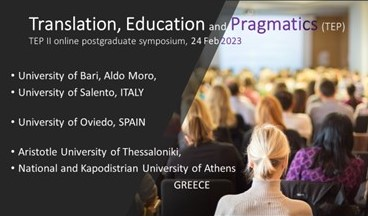Description
ABC STEREO Project: Real-time subtitling to facilitate communication between healthcare professionals and hearing-impaired and foreign patients (Ottavia Carlino)
Communication between healthcare professionals and patients has to be effective and timely. Though, it becomes particularly difficult when healthcare professionals attend hearing-impaired or foreign patients, or in the presence of physical barriers that hinder listening. Different projects looked at the specific problems of the two-way communication between deaf sign language users and hearing users (Sobhan et al., 2019; Tsimpida et al., 2018), as well as communication between healthcare professionals and foreign patients (Schouten et al., 2020; Baraldi et al., 2021; Anderson et al., 2021). Also, because of the COVID-19 pandemic, studies on communication difficulties in the presence of physical barriers have been launched (Chodosh et al., 2020; Trecca et al., 2020; Rahne et al., 2021). Nonetheless, there are no studies specifically addressing commu¬nication problems with hearing-impaired people or people with temporary hearing loss, nor are there systems designed to facilitate communication between health professionals and such users. For this reason, the ABC Stereo project, launched in January 2022 in Italy, aims to find a common solution for three different groups of patients: patients with chronic hearing loss (the elderly) or temporary hearing loss (those who have suffered an injury to the auditory system), but also foreign patients (whenever an interpreter is not available), and those who are required to communicate through physical barriers (as they are either contagious or septic). Although these patients are widely different, we believe that a common solution to their problems can be found: using automatic voice recognition to create real-time subtitles could represent a step forward towards the esta¬blishment of a truly symmetrical relationship between healthcare professionals and patients. In addition, the use of voice recognition combined with voice-to-text technology would enable the whole conversation to be transcribed for possible future use. The project consists of five main phases: the theoretical study of real-time subtitling and healthcare professional-patient communication; the data gathering through questionnaires and interviews with healthcare professionals and patients in order to identify the main problems and interest in a new form of communication; the identification of the voice recognition and subtitling technologies best suited to healthcare contexts; the on-site testing in at least one hospital unit and one nursing home; finally, the identification and resolution of possible shortcomings and failures of the system and the awareness raising among healthcare managers and staff on the benefits it could bring.

